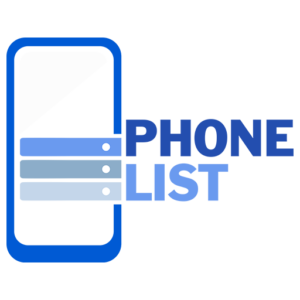Voice search is becoming a dominant force in digital marketing, with more than 8 billion voice assistants expected to be in use by 2025 (Juniper Research). Consumers increasingly rely on voice commands for quick answers, shopping, and local searches.
Steps to Optimize for Voice Search in 2025:
- Focus on long-tail keywords: Include natural, conversational phrases in your content.
- Local SEO: Optimize “near me” searches by updating your Google My Business profiles.
- FAQ Pages: Create detailed FAQ sections to answer specific voice queries.
- Mobile Optimization: Make sure your site is mobile-friendly as voice search often occurs on smartphones.
According to a Deepgram report, 82% of companies are already using voice technology, and 85% expect it to be widely adopted within the next five years. Additionally, 66% believe voice search will become a mandatory component of marketing strategies in the coming years.
Example: A restaurant might optimize its website for the query “Where is the best sushi near me?” to appear in the voice assistant’s search results.
Short Videos: Engaging Content Increases Engagement
Short videos have been a trend in online marketing for the past few years. Platforms like TikTok, Instagram Reels, and YouTube Shorts are helping to engage audiences on a massive scale. According to Wyzowl, 93% of marketers say video is critical to their marketing strategy, with short videos leading the way.
How to effectively use the short video trend:
- Behind the scenes content: Show off your team, processes, or product development.
- Tips and Tricks: Create short telemarketing data how-to videos on your niche.
- User-Generated Content (UGC): Share videos from customers using your product.
- Interactive elements: Add polls, stickers, or Q&A sessions to engage your audience.
Video-focused platforms get twice the audience response of static content. Brands will increasingly invest in short, dynamic formats to capture how to recruit and retain attention. Short, concise videos are more effective as advertising materials.
Statistics: According to WordStream, short videos get 1200% more shares than text and images combined.
Web 3.0 and Metaspace: A New Dimension of Interaction
Web 3.0 technologies, including blockchain gambler data and metaspace, are changing the way consumers and brands interact. Bloomberg predicts that the metaverse market alone will grow to $800 billion by 2025.
How Marketers Can Take Advantage of Web 3.0 and Metaspace Marketing Trends:
- Virtual Stores: Create digital storefronts on platforms like Decentraland.
- NFT Campaigns: Offer branded NFTs as collectibles or loyalty rewards.
- Immersive Advertising: Develop interactive advertising for VR environments.
- Gamification: Create branded games or sponsor eSports events to attract younger audiences.
Implementing such technologies requires resources, so strategies should be planned and budgeted for in advance. Keep in mind that you may also need a team to maintain and improve the meta-environment for your business.
Example: Nike launched “Nikeland” in Roblox, attracting millions of visitors to its virtual world. Shopify, on the other hand, is starting to implement meta-technologies for a new online shopping experience where you can “try on” a product in real time or test out available product features.
User-Generated Content and Influencer Marketing: Authenticity is Key
In 2025, authenticity remains a key component of successful online marketing. User-generated content (UGC) and influencer partnerships offer brands a powerful way to connect with their audience. According to Takumi, 61% of consumers trust influencer recommendations more than brand advertising.
Steps to Maximize UGC and Influencer Marketing:
- Micro-influencers: Partner with influencers with 10-50k followers to increase your business’ credibility in the niche.
- Branded Hashtags: Encourage customers to share photos and videos using unique hashtags.
- Attract customers: Post user-generated content on your website, social media, or email newsletters.
- Influencer-led campaigns: Collaborate with creators who share your brand values.
Think about what emotions motivate you to share your purchase on Instagram or Tik Tok? How can you evoke such emotions in your target audience so that users create content with your product or service themselves? You can offer additional bonuses, promotions, and loyalty programs to those who recommend you on social networks.
Statistics: Advertising campaigns using UGC content have a 29% higher conversion rate than campaigns without user-generated content.






